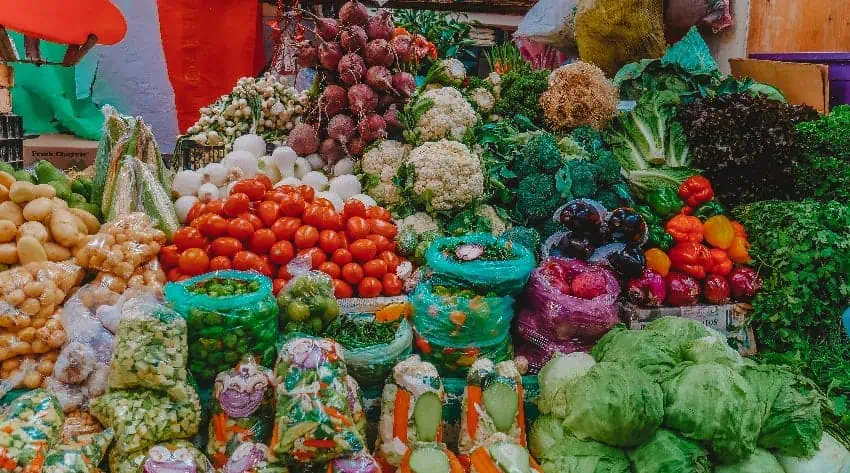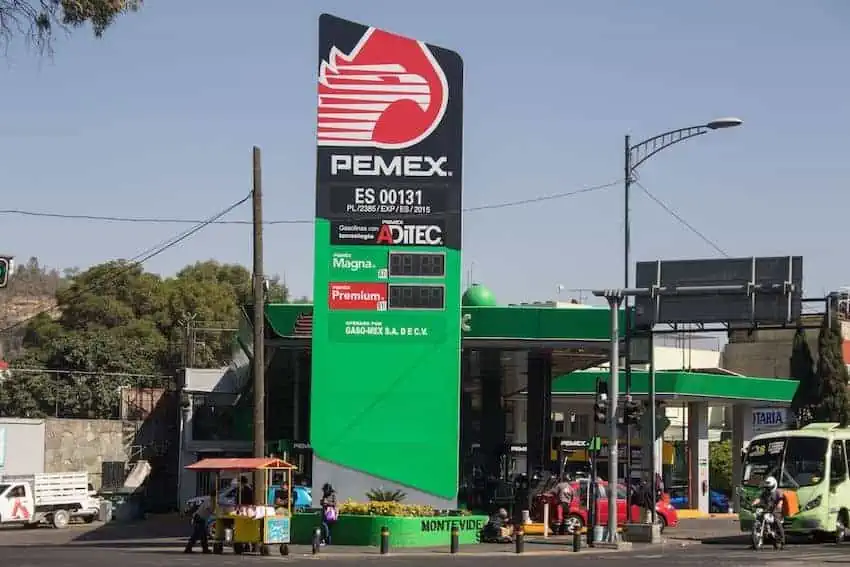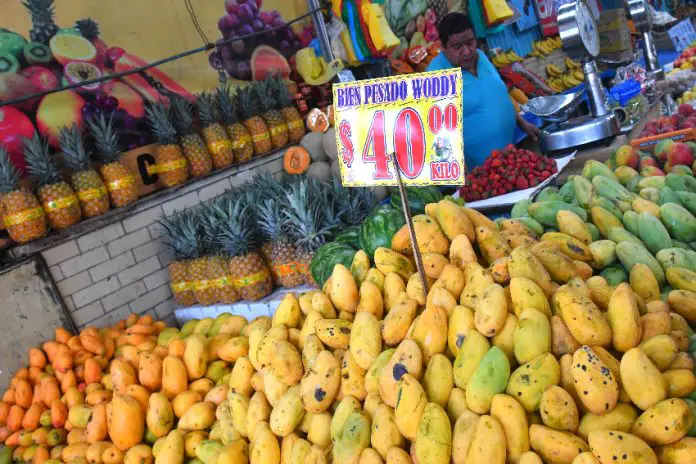Giving up fruit and vegetables might not be good for your health, but it could be good for your finances.
Stubbornly high inflation for fruit and vegetables was a major factor in the increase in Mexico’s annual headline inflation rate for a fourth consecutive month in June.

The national statistics agency INEGI reported Tuesday that the headline rate was 4.98% in June, up from 4.69% in May.
The rate was slightly higher than expected, exceeding the 4.87% median estimate of analysts surveyed by Bloomberg by 0.12 percentage points.
Headline inflation in Mexico in June hit its highest level since the same month last year, when the rate was 5.06%.
In better news, the closely-watched annual core inflation rate, which excludes volatile food and energy prices, declined for a 17th consecutive month to reach 4.13% in June, down from 4.21% in May.
The core rate was just below the 4.14% consensus forecast of analysts surveyed by Bloomberg.
Fruit and vegetables prices increased almost 20% annually
Compared to June 2023, fruit and vegetable prices increased 19.73% last month, up from 18.55% in May.
The year-over-year increase for those products was easily the highest among the different categories monitored by INEGI. Widespread drought in Mexico – alleviated somewhat by a rainy June – has contributed to the increase in fruit and vegetable prices.
Andrés Abadía, chief Latin America economist at Pantheon Macroeconomics, said that the latest inflation data “confirms that adverse climatic conditions continue to drive general inflationary pressures.”

The rise in the cost of fruit and vegetables was the driving factor in the 10.36% annual increase in prices for agricultural products. Prices for meat — the other component in the category — were 2.89% higher in June than the same month last year.
INEGI also reported that energy prices, including those for electricity and gasoline, increased 5.28% annually in June. Services were 5.15% more expensive than a year earlier, prices for processed food, beverages and tobacco rose 4.22% and the cost of non-food goods increased 2.16%.
What does the latest inflation data mean for the Bank of Mexico’s next interest rate decision?
Mexico’s annual headline inflation rate has now been above the central bank’s 3% target for 40 months.
The Bank of Mexico (Banxico) cut its key interest rate to 11% from a record high 11.25% in March after headline inflation declined to 4.40% in February.
The bank’s board will hold its next monetary policy meeting on August 8. At its June 27 meeting, four of five Banxico board members including Governor Victoria Rodríguez voted in favor of leaving the benchmark interest rate unchanged.
Bloomberg reported Tuesday that the increase in headline inflation in June complicates Banxico’s efforts to cut interest rates.
Jonathan Heath, one of the central bank’s board members, noted on X that headline inflation had reached its highest level in 12 months in June. He also highlighted that the annual headline rate in the second half of last month was 5.17%. “Very concerning,” Heath wrote.
However, Oxford Economics’ Latin America economist suggested that a a 25-basis-point cut on Aug. 8 is not out of the question.
“The worry now shouldn’t be general inflation. The fact that core inflation has been slowing, even if at a lower rate, should be enough of a positive sign for the Bank of Mexico,” said Joan Enric Domene Camacho.
For his part, Abadía wrote in a research note that “we recognize that adverse external factors and the effects of poor weather on crucial crops may potentially delay action” by the central bank.
Bloomberg reported that the downward trend in core inflation led some analysts to predict that the Bank of Mexico board would vote in favor of a 25-basis-point interest rate cut on Aug. 8.
However, “others are more skeptical now that Banixco is dealing with a sudden plunge in the value of the peso following last month’s election,” the news agency said.
The peso depreciated sharply against the US dollar after the coalition led by the ruling Morena party won large majorities in both houses of Congress that put it in a strong position to approve a range of controversial constitutional reform proposals.
The peso fell to almost 19 to the dollar 10 days after the election, but has since recovered somewhat. At 1 p.m. Mexico City time on Tuesday it was trading at 17.90 to the greenback, about 5% weaker than its pre-election level.
With reports from El Economista, El Financiero and Bloomberg
